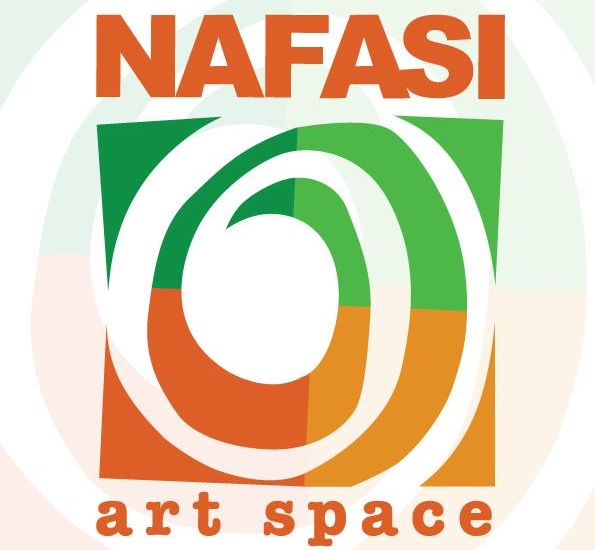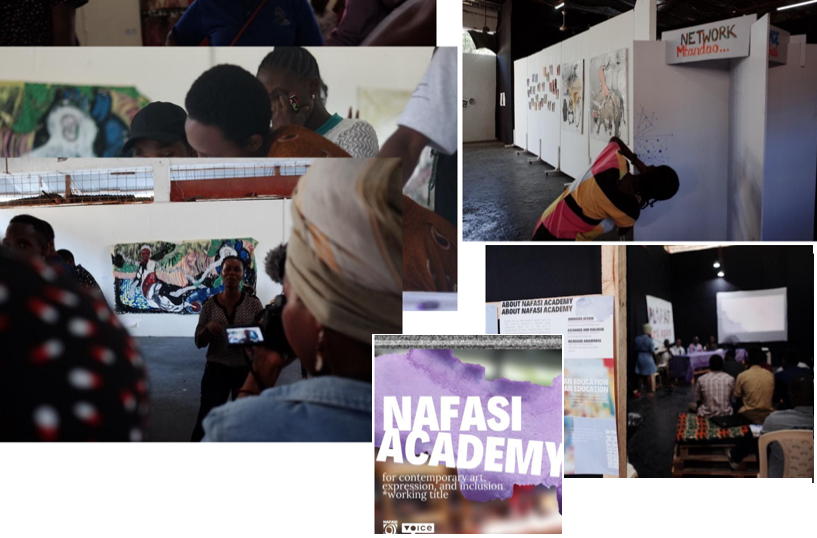Project
Art rights unite
-
Amount Funded
99,506 EUROProject Duration
01 Apr 2019 - 31 Mar 2020 -
-
Lead organisation
-
Nafasi Art Space is a leading contemporary centred and creative hub in Dar es Salaam, Tanzania where visual and performing artists create, learn, exchange, exhibit and perform. Their project; Art rights unite, innovates new human-centred, beneficiary driven innovations that result in artists from vulnerable groups feeling safer, included, and able to contribute to society through self-expression.
The arts rights Unite project also results in increased skills and employment for artists from vulnerable groups and networks/ supports systems for artists, activities, and organisation that support social inclusion. The project recognises the interrelations between different vulnerable groups and provides a safe space for them to explore shared challenges and opportunities.
Finally this innovation creates visibility and awareness among the public about issues facing vulnerable groups through artists creative output and production, which includes visual art such as photography, painting, sculpture and installation, and performing arts such as music, drama and dance, as well as high-quality recordings of performances and exhibitions that are shared online.
-
Organisation
Nafasi Art Space is a leading contemporary centred and creative hub in Dar es Salaam, Tanzania where visual and performing artists create, learn, exchange, exhibit and perform. Their project; Art rights unite, innovates new human-centred, beneficiary driven innovations that result in artists from vulnerable groups feeling safer, included, and able to contribute to society through self-expression.
The arts rights Unite project also results in increased skills and employment for artists from vulnerable groups and networks/ supports systems for artists, activities, and organisation that support social inclusion. The project recognises the interrelations between different vulnerable groups and provides a safe space for them to explore shared challenges and opportunities.
Finally this innovation creates visibility and awareness among the public about issues facing vulnerable groups through artists creative output and production, which includes visual art such as photography, painting, sculpture and installation, and performing arts such as music, drama and dance, as well as high-quality recordings of performances and exhibitions that are shared online.
-
Project
Art rights unite project offers studio space, workshops/training, and exhibition/performance platforms, specifically designed for artists from vulnerable groups, specifically women, people with disabilities, and disadvantaged youth. The project raises visibility and provides counter-narratives in mainstream discourse by innovating around the artist driven creative human model.
This project increases cultural rights for artists from vulnerable groups, specifically, they benefit from increased creative production, education, exchange and networks, and platforms for their art to reach the public. Furthermore, the outcome will be strengthened freedom of expression and the visibility of counter-narratives in mainstream society.
-
-
Art rights unite project offers studio space, workshops/training, and exhibition/performance platforms, specifically designed for artists from vulnerable groups, specifically women, people with disabilities, and disadvantaged youth. The project raises visibility and provides counter-narratives in mainstream discourse by innovating around the artist driven creative human model.
This project increases cultural rights for artists from vulnerable groups, specifically, they benefit from increased creative production, education, exchange and networks, and platforms for their art to reach the public. Furthermore, the outcome will be strengthened freedom of expression and the visibility of counter-narratives in mainstream society.
-
NAFSASI successfully achieved its project goals, fostering a vibrant artistic community and empowering marginalized artists through comprehensive education and exhibition opportunities.
Over 11 community groups representing diverse marginalized communities actively participated in discussions about the project space and its goals. The participating artists themselves hailed from various marginalized backgrounds, ensuring the project’s inclusivity from the ground up.
A strong beneficiary network was built, with more than 50 individuals (30 female, 20+ male) including artists, advocates, and administrators joining the group. This group played a crucial role in guiding the program’s execution.
To attract participants, Nafasi utilized two online platforms with a combined following exceeding 13,500. Additionally, over 500 physical posters were distributed. This outreach resulted in 75 applications (25 female, 50 male). After careful consideration, 27 interviews (20 female, 7 male) were conducted, leading to the selection of a diverse and talented group of 14 Student Members (9 female, 5 male).

These 14 Student Members (8 female, 6 male) actively participated in the program. They embarked on a comprehensive journey that included 5 intensive training modules, 10 months of training, 12 months of studio access, 4 public exhibitions, 1 public performance, 40 artistic assignments, and 7 site visits. Notably, 13 student members successfully completed the program.
Mentorship also played a significant role. 8 aspiring photography students received guidance from a renowned professional. All 14 students benefited from extensive mentorship from established professionals in over 5 artistic disciplines throughout the 10-month training period. They also received thorough theoretical training on the conceptual artistic process. Furthermore, the students had the opportunity to interact and learn from a diverse group of over 33 guest speakers, facilitators, and trainers.
The project’s impact went beyond artistic development. It empowered artists from marginalized communities by providing them with unprecedented access to art space, education, exchange opportunities, and exhibition platforms. Throughout the program, selected students became progressively more engaged in artistic production, using their art to explore themes of identity, expression, and rights.
The culmination of the program saw all members successfully participating in five theory masterclasses, nine technical mentorships, six workshops and exchanges, four exhibitions, one public performance, one showcase at the National Museum of Tanzania, and one art conference. Empowered by their newfound confidence and expanded network, several students even submitted their work to other local and international artistic opportunities.

This program instilled immense pride not just in the students, but also in their mentors and administrators. Their newfound confidence and artistic skills will undoubtedly propel them forward, helping them overcome societal limitations.
Looking ahead, NAFASI, through its renovated studio, will continue its mission of empowering artists from marginalized communities by providing them with continued access to art space, education, and exhibition platforms.





